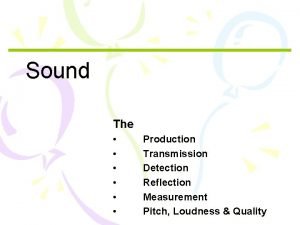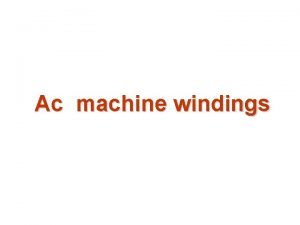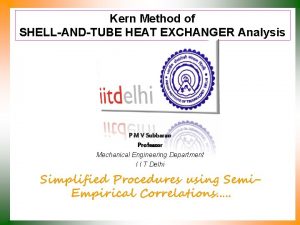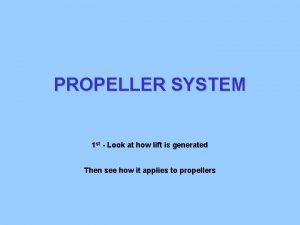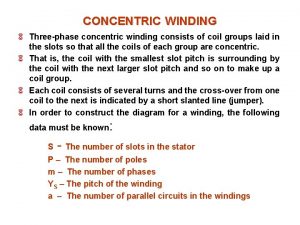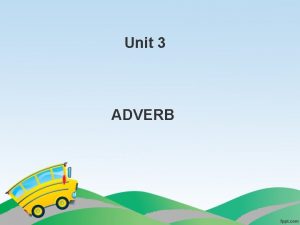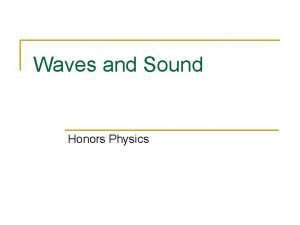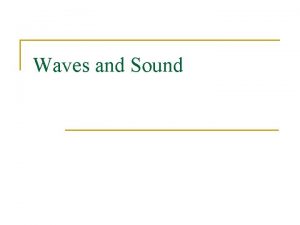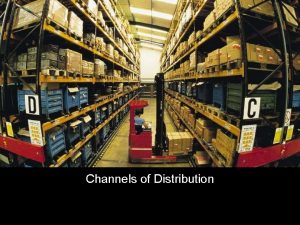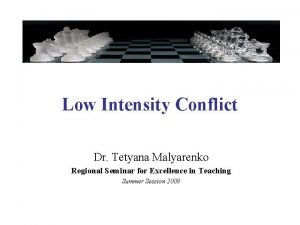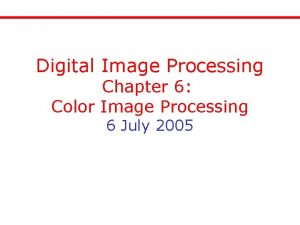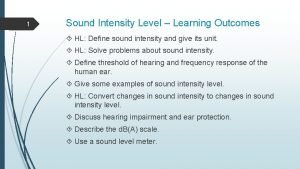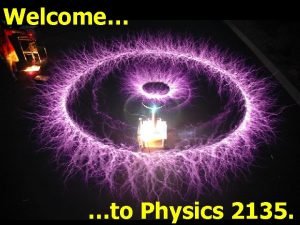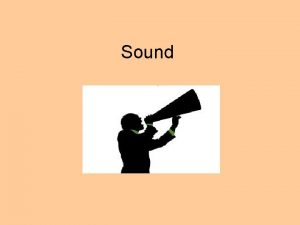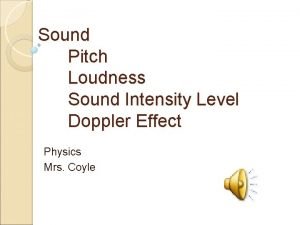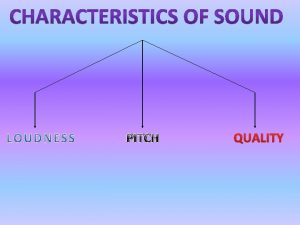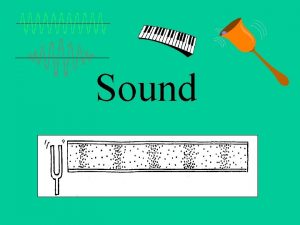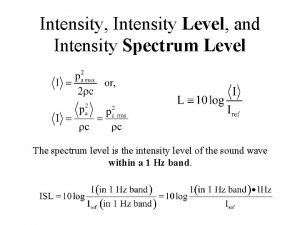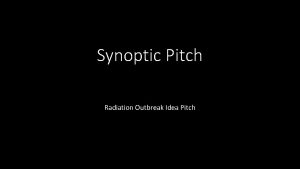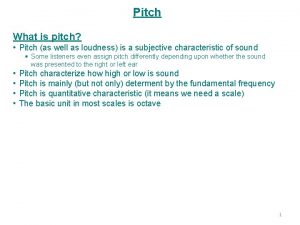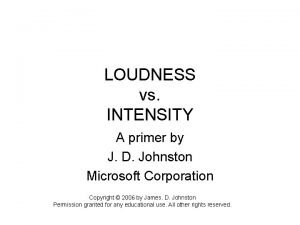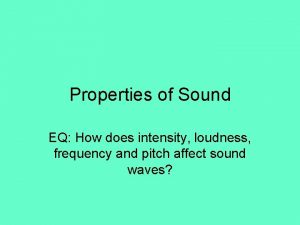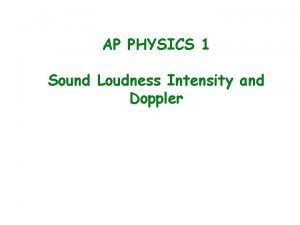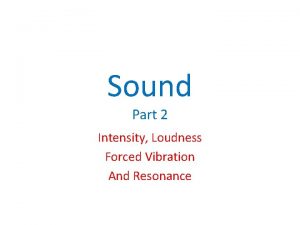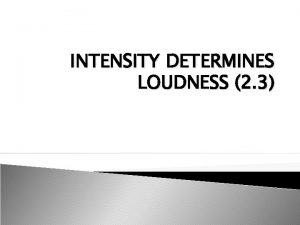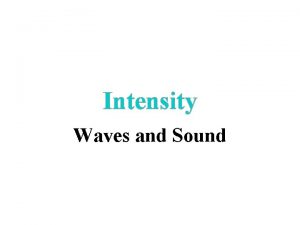Fundamental frequency F 0 Pitch Hz Intensity Loudness
















![Technical details Moulines & Charpentier, 1990 [1] original waveform windowed waveform 1 2 3 Technical details Moulines & Charpentier, 1990 [1] original waveform windowed waveform 1 2 3](https://slidetodoc.com/presentation_image_h/16669fc36f626ef63d0ce81188ba18d5/image-17.jpg)












![References [1] E. Moulines and F. Charpentier (1990) “Pitch synchronous waveform processing techniques for References [1] E. Moulines and F. Charpentier (1990) “Pitch synchronous waveform processing techniques for](https://slidetodoc.com/presentation_image_h/16669fc36f626ef63d0ce81188ba18d5/image-30.jpg)
- Slides: 30






운율이란? • 이들 구성요소들은 음성학적으로 다음과 같이 불립니다 • Fundamental frequency (F 0, Pitch), Hz Intensity (Loudness), d. B Duration (Length), msec 6










Technical details • Manipulation of 1. segmental durations, including phrase breaks 2. F 0 contours 3. intensity contours • For 1 and 2 PSOLA (Pitch Synchronous Over. Lap and Add), developed by Moulines & Charpentier, 1990 [1] implemented in Praat [2] • For 3 Intensity swap in Praat 16
![Technical details Moulines Charpentier 1990 1 original waveform windowed waveform 1 2 3 Technical details Moulines & Charpentier, 1990 [1] original waveform windowed waveform 1 2 3](https://slidetodoc.com/presentation_image_h/16669fc36f626ef63d0ce81188ba18d5/image-17.jpg)
Technical details Moulines & Charpentier, 1990 [1] original waveform windowed waveform 1 2 3 4 5 6 7 8 9 10 11 12 13 14 15 16 17 18 19 shortened waveform 1 1 4 7 3 10 5 13 16 7 19 9 waveform with lower F 0 11 13 15 17 19 17

Technical details 1 Segmental durations • Segment alignment & PSOLA processing of durations : Alignment can be manual or automatic (with the help of speech recognition) k “…came in…” shrin h st re t c non-native n k k e. I m i native e. I m i n 18

Technical details 1+2 Segmental durations + F 0 contour • PSOLA processing of F 0 on duration-treated utterance native F 0 native k e. I m i n non-native F 0 19

Technical details 1+2+3 Segmental durations + F 0 contour + intensity contour • Mathematically “neutralize” non-native speaker’s intensity contour and transfer native speaker’s intensity contour in Praat – Holger Miterer (personal communication) native intensity native k e. I m i n non-native intensity 20

Technical details 1+3 Segmental durations + intensity contour • Segment alignment & PSOLA processing of duations followed by intensity contour transfer native intensity shrin h st re t c non-native n k k e. I m i native k e. I m i n non-native intensity 21

Technical details 2+3 F 0 contour + intensity contour • “Reverse” segment alignment & PSOLA processing of F 0 followed by intensity contour transfer native F 0 native intensity k st re t c k shri n non-native n h k e. I m i native e. I m i n non-native F 0 non-native intensity 22

Technical details • Weakness 1. Voiceless segments can be made “voiced” in the windowing process (pitch-synchronous technique) 2. Excessive handling results in unnatural synthesis (One solution; pitch rescaling [3]) • Segment alignment should be fine-tuned according to the voiced/voicless status of the (sub-)segments for better results 23

Technical details Examples native utterance non-native utterance synthetic non-native (durations+F 0+intensity) synthetic non-native (durations+intensity) synthetic non-native (F 0+intensity) 24

Technical details Comparison before synthesis – duration, F 0 & intensity (blue & yellow) native utterance non-native utterance 25

Technical details Comparison after synthesis – duration, F 0 & intensity (blue & yellow) native utterance synthetic non-native 26

Technical details Comparison after synthesis – duration & intensity (blue & yellow) native utterance synthetic non-native 27

Technical details Comparison after synthesis –F 0 & intensity (blue & yellow) native utterance synthetic non-native 28

활용분야 • The technique could be used (1) In second language education to facilitate/motivate acquisition of the target language prosody to emphasize the importance of prosody in achieving native speaker fluency (2) For patients with vocal disorders to help achieve the prosody of a normal voice • Auto-segmentation via ASR (Automatic Speech Recognition) or DTW (Dynamic Time Warping) [3] can be employed to automate the segment alignment. 29
![References 1 E Moulines and F Charpentier 1990 Pitch synchronous waveform processing techniques for References [1] E. Moulines and F. Charpentier (1990) “Pitch synchronous waveform processing techniques for](https://slidetodoc.com/presentation_image_h/16669fc36f626ef63d0ce81188ba18d5/image-30.jpg)
References [1] E. Moulines and F. Charpentier (1990) “Pitch synchronous waveform processing techniques for text-to-speech synthesis using diphones” Speech Communication 9, 453 -467. [2] P. Boersma (2005) “Praat, a system for doing phonetics by computer”, Glot International, Vol. 5(9/10), pp. 341 -345. [3] S. Yi (2007) “Perception of English prosody by Americans and Koreans and its pedagogical implications”, Ph. D. Dissertation, Busan: Pusan National University. [4] K. Yoon (2006) “Imposing native speakers’ prosody on non-native speakers’ utterances”, Proceedings of the 9 th Western Pacific Acoustics Conference (WESPAC 9), Seoul, South Korea. 30
 Pitch depends on
Pitch depends on Loudness contour
Loudness contour Texture refers to loudness and quietness of music
Texture refers to loudness and quietness of music Pitch 2 pitch chanhassen
Pitch 2 pitch chanhassen Types of ac winding
Types of ac winding Cyclic pitch vs collective pitch
Cyclic pitch vs collective pitch The overall heat transfer coefficient
The overall heat transfer coefficient Back pitch and front pitch
Back pitch and front pitch Propeller blade angle
Propeller blade angle Concentric winding induction motor
Concentric winding induction motor Example of adverb of place
Example of adverb of place Speed and agility frequency, intensity, time type
Speed and agility frequency, intensity, time type Fundamental frequency
Fundamental frequency What are the two types of waves?
What are the two types of waves? Relative frequency bar chart
Relative frequency bar chart Probability with relative frequency
Probability with relative frequency Joint frequency
Joint frequency What is a marginal frequency
What is a marginal frequency Power of sine wave
Power of sine wave Two way conditional frequency table
Two way conditional frequency table Vmax= aw
Vmax= aw Exclusive distribution intensity
Exclusive distribution intensity Low intensity conflict definition
Low intensity conflict definition Distribution decisions in marketing
Distribution decisions in marketing Extensive culture
Extensive culture Color slicing in image processing
Color slicing in image processing Earthquake intensity depends primarily on the height of
Earthquake intensity depends primarily on the height of Electric field intensity formula
Electric field intensity formula A literary work in which special intensity is
A literary work in which special intensity is Sound intensity
Sound intensity Physics 2135
Physics 2135
